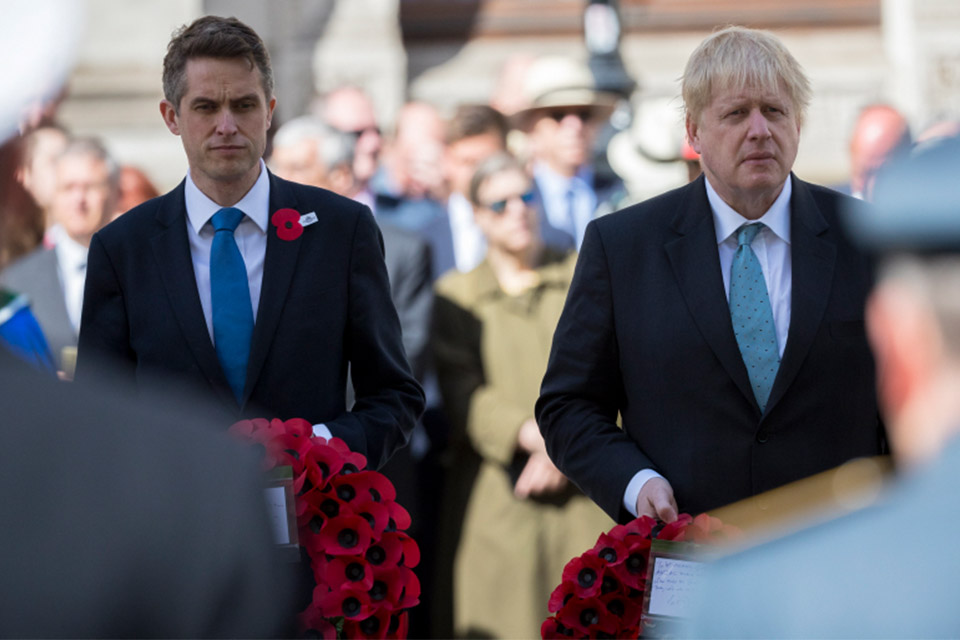News story: MSPs discover more about Europe’s largest military exercise
Exercise Joint Warrior includes more than 11,600 military personnel from 17 nations and is directed from the Maritime Operations Centre at HMNB Clyde, Scotland’s largest military establishment.
The purpose of the visit today (April 27 2018) is to help MSPs to better understand the range of social and welfare issues relevant to Scots-based armed forces personnel, and their families.
Launched by the Parliament’s Presiding Officer Ken Macintosh MSP and the Ministry of Defence in April 2017, the Armed Forces Visit Programme has already had successful fact-finding visits to the Army’s Glencorse Barracks, Penicuik, RAF Lossiemouth, Moray and Royal Marine Condor, Arbroath.
The MSPs will find out how HMNB Clyde and military training areas across Scotland are used by the Royal Navy, Army and RAF to train together across air, land, sea and cyber domains, practicing “high-end” war-fighting between near-peer adversaries.
The Joint Warrior training scenarios involve multiple sovereign nations disputing resources and territories; counter-terrorism and anti-smuggling activity; information warfare; and evacuation operations. This year it is running from 21 April until 4 May.
The group also found out more about the developments at HMNB Clyde which will see it be the sole home of the UK Submarine Service from 2020 and their visit included time in a submarine control room simulator.
Naval Regional Commander Captain Chris Smith said:
The Armed Forces Visits programme helps MSPs find out more about the role and purpose of the military communities across Scotland and the issues that are important to them.
Although Defence is clearly reserved to Westminster, the Scottish Parliament’s policies and decisions affect the day to day lives of all of our Scots-based service personnel.
In addition to being home to the Submarine Service from 2020, Scotland is home to an Army Infantry Operational, Engagement and Resilience Brigade, the RAF’s Quick Reaction Alert interceptors (North) and submarine hunting Maritime Patrol Aircraft flying from Lossiemouth.
The MOD has around 10,000 sailors, soldiers and air personnel living permanently in Scotland, supported by 8,000 reservists and civilians. Scottish industry benefits from Defence spending £1.5bn with it each year, supporting 10,500 private sector jobs in Scotland. The Defence Board confirmed in February 2017, that £1.7 billion would be invested to upgrade Scottish military bases over the next decade.
List of attending MSPs
-
Mr Richard Lochead, Scottish National Party Member for Moray
-
Mr Lewis Macdonald, Scottish Labour Member for North East Scotland
-
Ms Jackie Baillie, Scottish Labour Member for Dumbarton
-
Mr Maurice Corry, Scottish Conservative and Unionist Party Member for West Scotland
-
Mr Graham Simpson, Scottish Conservative and Unionist Party Member for Central Scotland
-
Ms Annie Wells, Scottish Conservative and Unionist Party Member for Glasgow
-
Mr Jackson Carlaw, Scottish Conservative and Unionist Party Member for Eastwood
-
Mr Murdo Fraser, Scottish Conservative and Unionist Party Member for Mid Scotland and Fife
-
Ms Michelle Ballantyne, Scottish Conservative and Unionist Party Member for South Scotland
-
Mr William Bowman, Scottish Conservative and Unionist Party Member for North East Scotland
-
Mr Brian Whittle, Scottish Conservative and Unionist Party Member for South Scotland
-
Mr Gordon Lindhurst, Scottish Conservative and Unionist Party Member for Lothian

